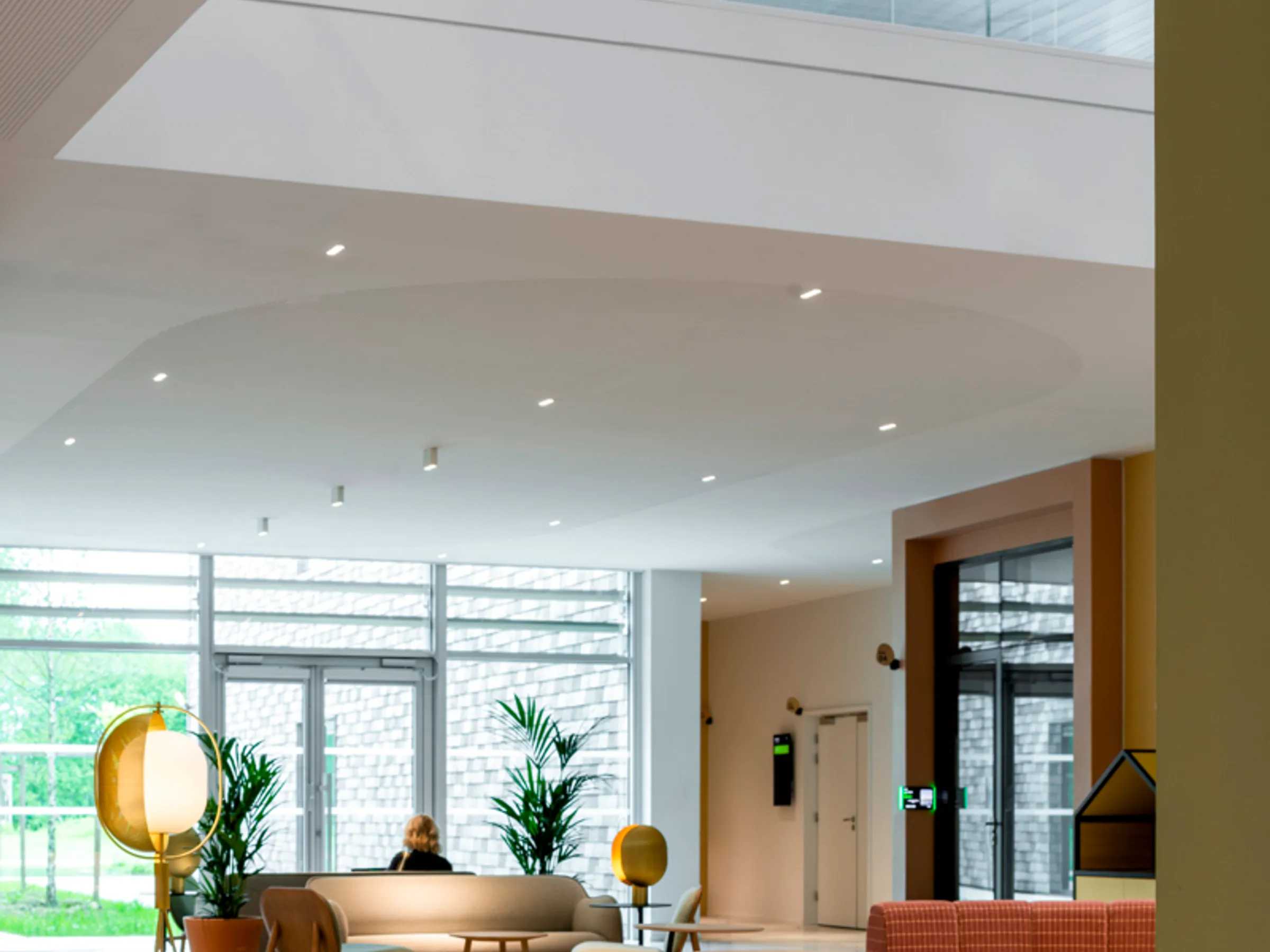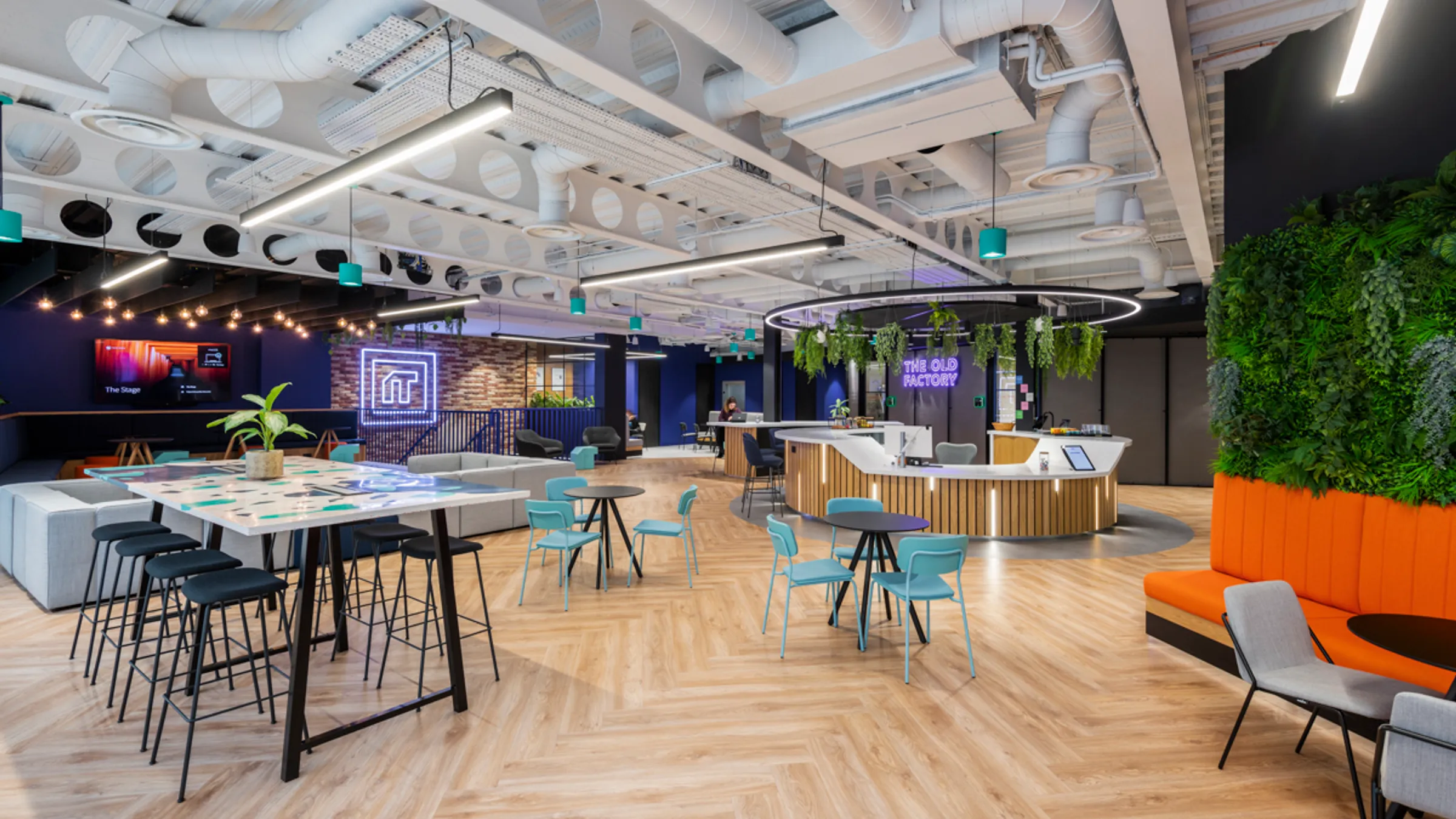Beyond Aesthetics
A Furniture Consultant's Guide to Ergonomic Furniture
This furniture guide explores how furniture consultants can integrate posture-friendly furniture into office design without compromising aesthetics.


Written by
Gareth van Zyl
Contents
Ergonomics stretch back to the 1970s with the release of the Ergon Task chair from Herman Miller. With a focus on spinal support and employee comfort, this was the beginning of the modern task chair as we know it now, with the concept being refined year after year, and in more recent years, the aesthetics of these office workhorses have really taken a leap forward. This is in part thanks to the advancement in material technology, which has allowed designers to push the boundaries whilst maintaining the core supporting functionality of the humble task chair.
By the end of this guide, you'll have a deeper understanding of how to blend ergonomics with stylish, high-quality design to create spaces that are as comfortable as they are visually engaging.
The Science of Comfortable, Ergonomic Seating
Whether you are designing a new office or undergoing an office refurbishment, seating is one of the most critical elements of ergonomic furniture, as it directly impacts posture, spinal alignment, and overall well-being.
A well-designed ergonomic office chair can mean the difference between chronic discomfort and all-day support. Understanding the science behind comfortable seating allows furniture consultants to recommend chairs that not only look appealing but also promote health and productivity.
The Role of Ergonomics in Seating Design
The difference between ergonomic seating and more informal chairs is that ergonomic seating is designed to support the body’s natural posture. Seating setups in places like cafes, restaurants, or even chairs and in your home have not been designed with ergonomics in mind, meaning that when using them for long periods of time during work, your body can be subjected to unnecessary strain.
Ergonomic seats provide a solution to this problem, relieving strain on muscles and joints. When people sit for extended periods, improper support can lead to slouching, lower back pain, and poor circulation.
The Features of an Ergonomic Office Chair
Not all chairs created are equal. To qualify as ergonomic, a chair should include the following essential features:
Adjustable Seat Height
Seat Tilt
Seat Depth
Lumbar Support
Backrest Recline
Height and Width Adjustable Armrests
Breathable Material
Swivel Base with Castors
The Impact of Poor Seating on Posture and Health
A poorly designed chair can have long-term effects on health, including:
Chronic Back and Neck Pain
Reduced Circulation
Decreased Productivity
Investing in an ergonomic office chair is not just about comfort - it’s about promoting long-term health and workplace efficiency. By understanding the science behind comfortable seating, furniture consultants can guide clients toward choices that support both functional aesthetics and well-being.


Desks That Promote Good Posture
A desk is more than just a surface to work on - it is critical for maintaining good posture and preventing long-term musculoskeletal issues. The Health and Safety Executive reported that 35.2 million days were lost due to work-related ill health in the UK in 2022-23; MSK disorders accounted for 6.6 million of those.
An ergonomic desk working alongside an ergonomic task chair supports a neutral body position, reducing strain on the neck, shoulders, back, and wrists. A well-designed desk can significantly enhance comfort, productivity, and overall well-being when combined with an ergonomic office chair.
The Importance of an Ergonomic Desk
Desks are made to conform to the same standards, but that doesn’t mean that all desks are the same. Like with seating, choosing the right desk is essential to reduce strain on your body. Working at a kitchen table or other informal space may be a nice change from the office or study, but these areas don’t cater to desk ergonomics.
Traditional desk positions encourage better posture and ensure the user maintains a healthy spinal alignment while working. But with an informal desk setup, this goes out the window. Desks that have not been made with working or ergonomics in mind can be the wrong height, or they may not have enough space underneath them. Not only this, but the size of the desk can also have an impact on seated posture while working.
A poorly designed desk can lead to:
Poor posture (hunched shoulders, forward head posture, slouched back).
Neck and back pain from prolonged sitting in an improper position.
Wrist strain caused by an incorrect keyboard and mouse height.
Reduced circulation due to limited movement throughout the day.
Adjustable-Height Desks vs. Static Desks
The concept of adjustable-height desks has been around for a while, and they are a great way to incorporate ergonomics into your office set-up. These types of desks allow users to switch between sitting and standing throughout the day, reducing the health risks associated with prolonged sitting.
The inclusion of height-adjustable desks in the office has become the new standard, as more employers are understanding the importance of ergonomics and realising the benefits these types of desks can offer.
The benefits of adjustable height desks include:
Encourage movement and better circulation throughout the workday.
Reduce pressure on the lower back by allowing users to alternate positions.
Improve energy levels and productivity by promoting better posture.
Help prevent long-term health issues like lower back pain.
However, traditional desks can still be posture-friendly furniture when paired with ergonomic accessories, such as:
Monitor stands to keep screens at eye level.
Keyboard trays to ensure proper wrist positioning.
Footrests to support lower body alignment.

Balancing Style with Practicality
One of the challenges that furniture consultants face is integrating ergonomic furniture and an office's aesthetic design.
While no one can deny the importance of ergonomics in the workplace, they must also be able to fit in with the client’s vision. Striking the perfect balance between functional aesthetics and practicality requires a thoughtful approach to materials, form, adaptability, and even the correct furniture placement.
Practical Tips for Furniture Selection
To ensure that ergonomic furniture meets both functional and aesthetic needs, consider the following:
Prioritise adjustability: A chair or desk that allows for height and posture adjustments ensures usability for different individuals without compromising style.
Match materials with the design theme: Manufacturers have enhanced and broadened their material choices available, meaning that functional items such as task chairs and desks can now slot seamlessly into any design scheme and often help to enhance the overall aesthetic.
Opt for space-saving solutions: Ergonomic chairs with a sleek profile or standing desks with built-in storage enhance usability without cluttering a space.
By integrating ergonomic furniture that blends form and function, consultants can create workspaces and living areas that not only look refined but also contribute to long-term comfort and well-being.


Discovering Ergonomic Furniture with Sketch
Thanks to the growing focus on creating more productive and healthier workplaces, the topic of ergonomics has become more important. From home offices to commercial spaces, furniture consultants need to go beyond surface-level aesthetics and consider ergonomic furniture that fully supports well-being without sacrificing style or ignoring client wishes.
Investing in ergonomic furniture, such as an ergonomic office chair or an ergonomic desk, is not a trend - it’s a necessity. Poorly designed furniture can lead to chronic pain, reduced productivity, and long-term health issues like lower back pain. On the other hand, ergonomic solutions contribute to greater comfort, efficiency, and even improved mood and focus.
Finding the balance between aesthetics and functional practicality is key. By carefully selecting furniture that aligns with ergonomic principles and modern design trends, consultants can create visually appealing spaces that benefit users' health.
Incorporating ergonomic standards into your recommendations as a furniture consultant can set you apart in the industry. By investing in pieces that not only look beautiful, but also enhance posture and comfort, you’ll help to create environments that promote well-being, productivity and long-term satisfaction.
Are you ready to rethink your approach to furniture selection? Get in touch with us today and see how we can revolutionise your office design.
Published on
March 13, 2025
Related Articles















